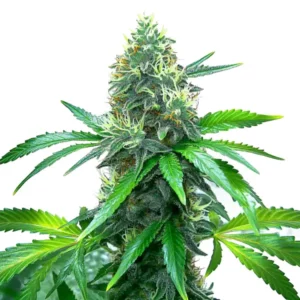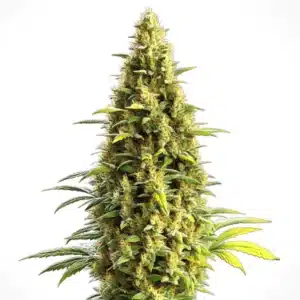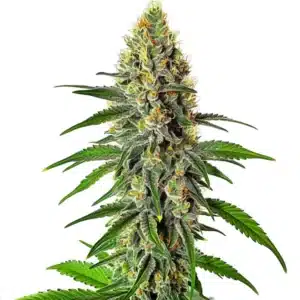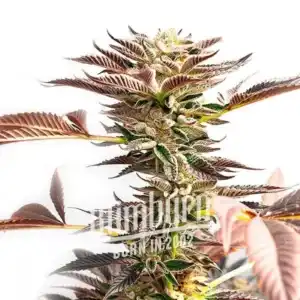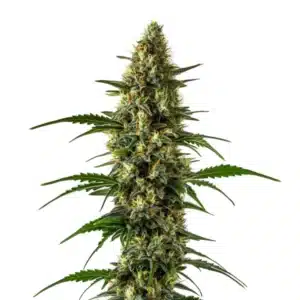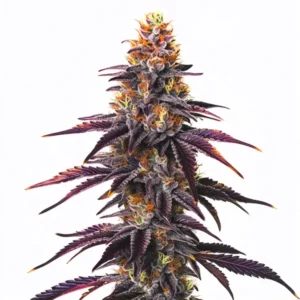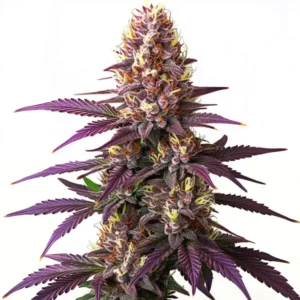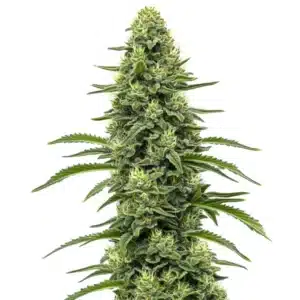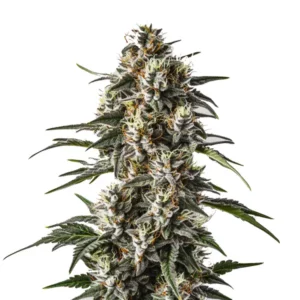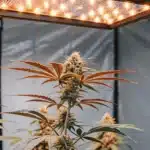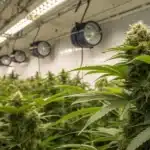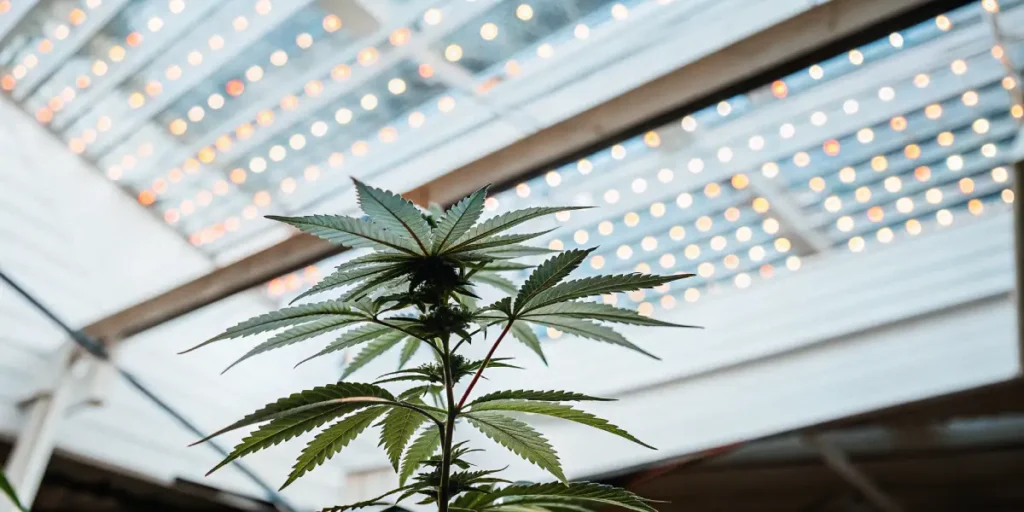
Knowing Cannabis and Light Spectrum
When growing cannabis, light plays a crucial role in its development and potency. Different light spectrums can significantly impact how cannabis grows and the quality of its yield. Knowing Cannabis and Light Spectrum is essential for both beginners and experienced growers, as grasping the nuances of lighting can dramatically improve yield and potency.
Plants, including cannabis, rely on light for photosynthesis. This process allows them to convert light energy into chemical energy, fueling their growth. The type of light spectrum used can make a big difference in plant health and the final product’s quality. Therefore, knowing cannabis and light spectrum is essential for successful cultivation.
Recommended Strains
For those looking to optimize their cannabis cultivation, choosing the right light spectrum is key. From enhancing growth to influencing the terpene profile, the effects of light spectrum on cannabis potency are profound. Let’s dive into the specifics of how light spectrum impacts cannabis and how you can use this knowledge to your advantage.
Optimal Light Spectrum for Cannabis Growth
The light spectrum refers to the range of light wavelengths plants use for photosynthesis. Cannabis plants primarily use blue and red wavelengths. Blue light promotes vegetative growth, helping plants develop strong stems and leaves. Red light, on the other hand, is crucial for flowering and bud development.
Choosing the optimal light spectrum for cannabis growth involves balancing these wavelengths. Many growers find success using full-spectrum lighting, which mimics natural sunlight. This approach supports plant health throughout all growth stages, ensuring a robust yield. Full-spectrum LED lights are especially popular due to their energy efficiency and effectiveness.
Besides to blue and red wavelengths, some growers incorporate far-red light to extend the day length perceived by plants, tricking them into growing more robustly. This tactic can further enhance the cannabis yield and full-spectrum lighting approach, ensuring that every phase of growth is optimized for maximum output. Knowing cannabis and light spectrum in this comprehensive way allows growers to exploit each stage of the plant’s life cycle.
Furthermore, the rise of sophisticated lighting technologies has enabled growers to simulate entire seasonal light changes, providing an even more refined control over the growing environment. This ability to tailor light conditions precisely to the plant’s needs can lead to healthier plants and higher yields, showcasing the importance of mastering the optimal light spectrum for cannabis growth.
Promos & Deals
Effects of Light Spectrum on Cannabis Potency
Light spectrum not only affects growth but also influences the potency and chemical profile of cannabis. Different wavelengths can alter the concentration of cannabinoids and terpenes, compounds responsible for the plant’s aroma, flavor, and effects.
For instance, UV light influence on cannabis terpenes is well-documented. Exposure to UV light can increase terpene production, enhancing the plant’s scent and taste. This is particularly beneficial for strains like Gelato, known for its rich, sweet flavor profile.
Knowing cannabis and light spectrum includes recognizing how specific wavelengths can enhance or inhibit various chemical processes within the plant. For example, certain UV spectrums can elevate THC levels, while others may boost CBD concentrations. This knowledge allows growers to strategically manipulate light conditions to produce cannabis with desired effects and potency.
Moreover, the effects of light spectrum on cannabis potency extend to the overall balance of cannabinoids and terpenes. By experimenting with different light recipes, growers can fine-tune the chemical profile of their plants, ensuring that each batch meets specific potency and flavor criteria. This precision in cultivation has become a hallmark of advanced cannabis growing techniques.
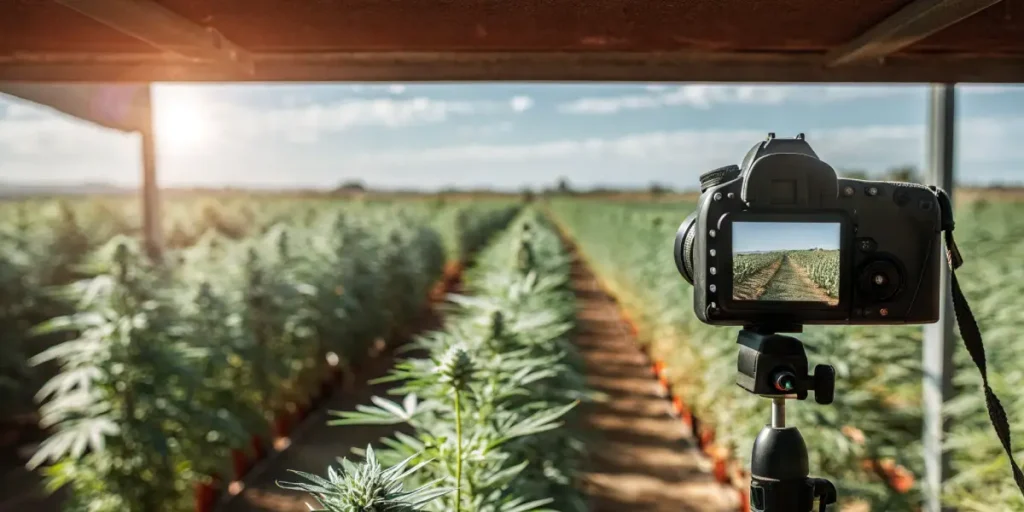
Cannabis Cultivation and LED Light Spectrum
LED lights have revolutionized cannabis cultivation. They offer growers the ability to fine-tune the light spectrum, optimizing plant health and yield. LEDs are energy-efficient and long-lasting, making them an economical choice for both small and large-scale operations.
The advantage of using LEDs is their ability to emit specific wavelengths. Growers can choose lights that emit more blue wavelengths during the vegetative stage and switch to red wavelengths during flowering. This flexibility allows for customized growth strategies, maximizing the plant’s potential at every stage.
In the realm of cannabis cultivation, knowing cannabis and light spectrum is crucial when utilizing LED technology. These lights not only provide the necessary wavelengths but also contribute significantly to reducing energy costs, which is vital for sustainable cultivation practices. The precise control offered by LEDs allows growers to adapt to the plant’s needs dynamically, ensuring optimal growth conditions at all times.
Additionally, the integration of smart technology with LEDs has opened new doors for remote monitoring and control of lighting conditions. This advancement means growers can adjust the light spectrum to fit specific growth phases, even when they are not physically present, thereby enhancing efficiency and effectiveness in cannabis cultivation and LED light spectrum utilization.
Practical Tips for Using Light Spectrum in Cannabis Growing
Implementing the right light spectrum involves more than just selecting the right bulbs. Here are some practical tips to ensure success:
- Start with a full-spectrum LED light for a versatile approach.
- Adjust light height and intensity based on plant stage and response.
- Monitor plants regularly and adjust spectrum as needed.
- Experiment with UV light exposure to enhance terpene production.
- Track plant growth and document changes for future reference.
Consistency is key when applying these techniques. Regularly assess how your plants respond to adjustments and be ready to tweak your setup. The right light spectrum can make a noticeable difference in plant health and yield.
By leveraging these tips, even novice growers can achieve professional results. Whether you’re cultivating for personal use or commercial purposes, knowing cannabis and light spectrum can unlock the full potential of your plants.
Incorporating these strategies requires a sound knowing of how each aspect of the light spectrum affects different stages of cannabis growth. This knowledge empowers growers to make informed decisions that can dramatically enhance both the quality and quantity of their harvests. The integration of technology and horticulture is paving the way for more sophisticated cultivation methods, allowing for precision and creativity in growing practices.
Moreover, documenting the effects of different light spectrums will help in refining your approach over time. As technology and research in cannabis cultivation advance, staying informed and adaptable will ensure that growers can continue to achieve exceptional results, making the most of the interplay between cannabis yield and full-spectrum lighting.
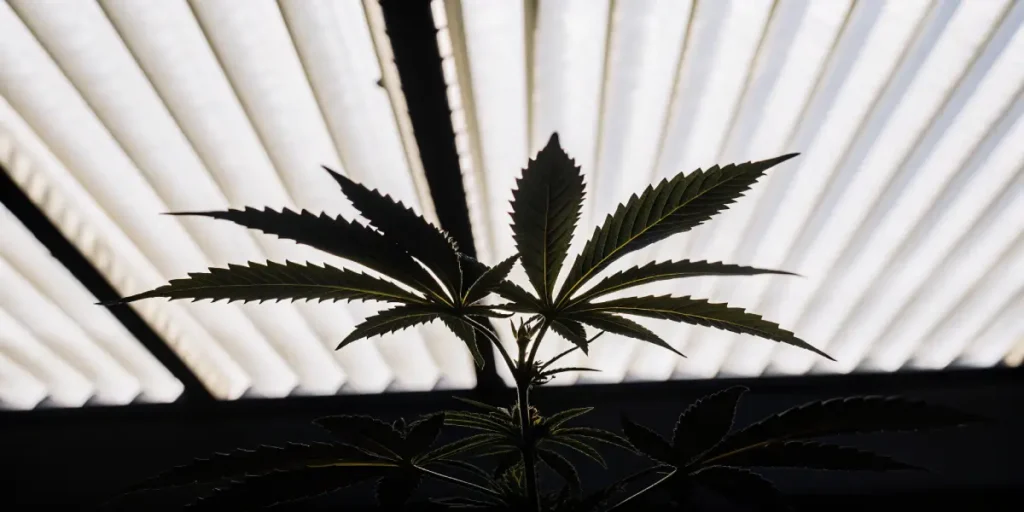
FAQs
How does light spectrum affect cannabis growth?
The light spectrum affects cannabis growth by influencing photosynthesis and plant development. Blue light is essential for vegetative growth, promoting strong stems and leaves. Red light is crucial for the flowering stage, enhancing bud production and size.
By providing the optimal light spectrum for cannabis growth, growers can ensure their plants develop healthily and yield high-quality buds. Adjusting the spectrum at different growth stages can lead to improved results and increased potency.
Knowing cannabis and light spectrum involves recognizing the nuanced differences in how each light wavelength affects plant physiology. By tailoring light conditions precisely, growers can optimize each growth stage, maximizing the effectiveness of their cultivation efforts and ultimately producing a superior product.
Furthermore, the ability to adjust the light spectrum dynamically allows for a more responsive growing environment. This adaptability is crucial for addressing any unforeseen challenges in the growth cycle, ensuring that plants remain healthy and productive throughout their lifecycle. The effects of light spectrum on cannabis potency and growth are profound, making it a cornerstone of successful cultivation.
What is full-spectrum lighting, and why is it important?
Full-spectrum lighting mimics natural sunlight, covering all wavelengths plants use for photosynthesis. This type of lighting supports cannabis through all growth stages, from vegetative to flowering, ensuring balanced development.
Using full-spectrum lighting is important because it provides the necessary light for all stages of growth, leading to healthier plants and higher yields. Growers often prefer full-spectrum LED lights for their efficiency and effectiveness in cannabis cultivation.
Knowing cannabis and light spectrum in the context of full-spectrum lighting reveals its critical role in creating an environment that closely resembles natural growing conditions. This holistic approach not only aids in robust plant development but also enhances the overall quality of the cannabis yield.
Moreover, full-spectrum lighting ensures that plants receive a balanced array of wavelengths, minimizing the risk of deficiencies that could compromise growth. This comprehensive lighting strategy is particularly beneficial in controlled indoor environments, where replicating the nuances of natural sunlight is essential for optimal plant health and productivity.
Can UV light increase cannabis potency?
Yes, UV light can increase cannabis potency by boosting terpene and cannabinoid production. Exposure to UV light stimulates the plant’s defense mechanisms, leading to higher concentrations of these compounds.
Growers can use UV light to enhance the flavor and effects of their cannabis. However, it’s important to use UV light carefully, as excessive exposure can damage plants. Controlled use can significantly improve the quality of the final product.
knwoing cannabis and light spectrum, particularly the UV light influence on cannabis terpenes, allows growers to strategically harness these wavelengths for enhanced potency. By carefully calibrating UV exposure, cultivators can stimulate the production of valuable compounds without risking plant health.
Moreover, UV light can be a powerful tool in differentiating high-quality cannabis products in the market. By increasing the terpene profiles and cannabinoid levels, growers can produce strains with unique and desirable characteristics, setting their products apart and meeting diverse consumer preferences.
Why are LED lights popular in cannabis cultivation?
LED lights are popular in cannabis cultivation because they are energy-efficient, long-lasting, and allow for precise control over the light spectrum. These advantages make LEDs an economical and effective choice for growers of all levels.
The ability to customize the light spectrum with LEDs enables growers to optimize conditions for each growth stage. This flexibility leads to better plant health, increased yields, and improved potency, making LEDs a top choice in the industry.
Knowing cannabis and light spectrum in relation to LED technology is crucial for maximizing the benefits of this innovative lighting solution. LEDs offer unparalleled control over the growing environment, allowing for tailored light conditions that enhance every aspect of cannabis cultivation.
Additionally, the energy savings achieved with LED lights contribute to more sustainable cultivation practices, reducing the environmental impact of growing operations. This sustainability, combined with the technological advancements in LED design, underscores their increasing popularity and efficacy in the cannabis industry.
What are the benefits of using specific light spectrums for cannabis?
Using specific light spectrums for cannabis offers several benefits, including optimized growth, enhanced potency, and improved terpene profiles. By tailoring the light spectrum, growers can maximize each plant’s potential.
Specific spectrums can promote desired traits, such as increased THC levels or rich flavors. This targeted approach allows growers to produce high-quality cannabis that meets their personal or commercial goals.
Knowing cannabis and light spectrum in detail enables growers to leverage specific wavelengths to achieve precise cultivation objectives. This strategic use of light spectrums can lead to the development of cannabis strains with tailored effects and superior qualities.
Furthermore, the ability to manipulate light conditions enhances the versatility and adaptability of growing operations. As consumer demands and market trends evolve, growers equipped with an knowing of light spectrum dynamics will be better positioned to innovate and respond effectively, ensuring the continued success of their cultivation endeavors.



